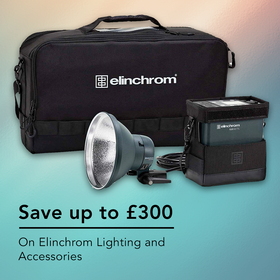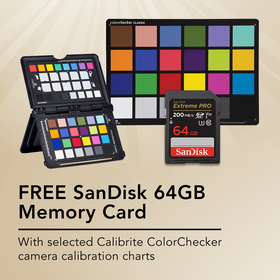Call Us: London / Leeds / Birmingham

Phottix Raja Hexa 150cm Softbox Review
by Michael Sewell
Softbox First Impressions
The Phottix Raja Hexa Quick-Folding Softbox 150cm is the most recent addition to my Phottix modifier range, and the fourth Raja that I own. It now works alongside two Raja Strip 30x140cm Softboxes and a 105cm Softbox. I expected the 150cm to be manufactured to the same exacting standards I found on the others I owned, and I wasn't disappointed.

Once again, the softbox was supplied with a tailored case. Really nicely made, with substantial padded walls and a really good quality zip. Best of all, the make and model of the softbox is emblazoned on the side of the case. Believe me, if you are working your way through a couple of dozen modifiers in a pile, having the modifier type and size in large letters on the side of the case saves a shedload of time.
The exterior material of the softbox is the same ripstop type nylon as my other Phottix boxes, with the contrasting light grey beading along the ribs. The brand name and modifier details are emblazoned on the side, just in case you forget. The interior material is the same, highly reflective silver that adds to the contrast quite nicely.

My first challenge was erecting it. The mechanism is the same quick button system as the other Raja softboxes, but the central locking rod is short. Unlike my other softboxes, you have to push it further down to reach the locking groove and hear that rather satisfying click as it locks in place. With it being much bigger than my other softboxes, the end result is that I can put it up with just a little more effort than when I'm using the 105cm softbox. (Bear in mind, I'm old!)

As you can see fromt the above image, the flash tube is seated fairly well forward in the mount ring, filling the back of the softbox really well. No mean feat, when considering the rear wall is pretty much flat.
The inner diffusion panel is near a dead fit, with very little gap around the edge. It's fixed in place with the usual hook and loop tabs. Extremely secure. The centre of the panel has a circular double density patch, ensuring there is no “hotspot” causing any issues.

The outer panel is a very neat fit. In fact, it's such an accurate fit, that should you not start the attachment off at a join to match the panel, you will find it can pull. Once accurately in place, it aids the rigidity of the whole softbox. Unlike the other softboxes I've reviewed in the Phottix Raja range, the 150cm does not come with a honeycomb grid, but I managed to pick one up from another manufacturer that fits perfectly.
And what about packing it away? A piece of cake, as they say. Reach in, stretch a bit further (because it's a 150cm hexa, and huge!), find the centre column and collar and squeeze the collar till you hear the pop as it lets go. Done!
This is a big box. I've used 150cm Octas for the last decade, and longer. 150cm Octas don't really seem that big, to be honest. But for some reason, this 150cm Hexa seems far bigger. It gives a nice circular catchlight to the eyes too. Octas are readily identifiable in catchlights or reflections, but the parabolic shape of the Hexa 150cm is near perfectly circular. The quality of the silver lined interior, and the fact the diffusion panels are well fitting and taut, as well as its shallow design, means the light loss is not as great as I have seen with other similar sized softboxes. And as with their other softboxes, Phottix supply the light loss information on the tag, attached to the case.
Light loss in stops
- Inner diffuser only -0.3
- Inner and outer diffuser -0.9
Raja Hexa 150cm Softbox - In Use
Okay, so this was never going to be a food shoot kinda mod. No, this needed some room. It's definitely a studio modifer, and one of my first shoots with it, was a quick portrait.

The 150cm Hexa was placed frame left, and barely above head height, mimicking a window. The background was lit frame right with a honeycombed stripbox. I found the contrast from the 150 very pleasing, to be honest, and leant itself really nicely to this Chiaroscuro lighting example.

Next up, a business headshot, with a more traditional lighting setup with the 150cm Hexa frame right and above head height. There was a honeycombed stripbox frame left, providing the accent light along her jawline, hair and cheek. Another honeycombed stripbox frame right, turned down a bit to offer a very subtle accent across her temple and cheek.
I really do like the “softness” of light I get from this 150.
Due to its size, the light still remains pleasingly soft at a greater distance. The light economy is noticeable too. I mentioned earlier about using 150cm Octas for quite some time, so I tended to have a rough idea as to what I was likely to get out of them, at a given distance and with a given output from a head. The Phottix Raja 150cm Hexa was definitely brighter, and besides the quality of the silver lining and the diffusion panels, the shallow shape certainly played its part. The upside is this allows me to move the 150cm softbox a little further back for broader coverage, and not worry about having enough power.

I do like working with Cosplayers. In this shot the 150cm Raja Hexa was suspended on a Phottix Saldo 395 Studio Boom, above and in front of our model here. The aforementioned third party honeycomb was in use, so as to control the pool of light. Coupled with an Elinchrom ELB 500 TTL To Go Set, the setup actually weighs surprisingly little, and is held aloft with relative ease. Just the one light, that's it.

Taking a 150cm softbox to the beach might not have been my brightest idea, but I had to give it a go. The breeze certainly gave me cold sweats on a couple of occasions as the huge Hexa 150cm lazily swung around on the lightstand. That being said, the end result was worth it, with the Hexa 150cm providing the key lighting, with a honeycombed stripbox frame right. Whilst it may well look like the accent lighting coming from frame left is the sun, it's actually another honeycombed stripbox. I had increased the shutterspeed and lowered the ISO to drop the ambient lighting by a stop and a half, so as to saturate what little colour there was in the sky.
Conclusion
This is never going to be a daily softbox for me, that position is very firmly defended by the Phottix Raja 105cm Hexa I've already reviewed. But where I need a broader light, this is definitely my weapon of choice. I do think it's a shame Phottix haven't included a honeycomb with it, as they do with most of their Raja softboxes. That being said, I really do believe this softbox is worth its weight in gold, Beautifully made, and very robust. Not normally a term I associate with the larger softboxes.


